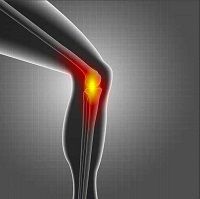Publication
Article
Surgical Rounds®
Bleeding Likely during Bridging Anticoagulation for Orthopedic Surgery
Author(s):
Surgeons' concerns about a controversial process to transition high-risk patients off anticoagulation may be warranted.

Surgeons’ concerns about a controversial process to transition high-risk patients off anticoagulation may be warranted, according to a new study that appears in the Archives of Orthopaedic and Trauma Surgery.
When patients who take long-term anticoagulation therapy need major surgery, anticoagulation needs to be interrupted temporarily unless the patient is high-risk. A high-risk status usually means that long-term anticoagulation must be replaced by a therapeutic dose of short-acting unfractionated or low-molecular-weight heparin (LMWH), according to most guidelines. This transition process, called bridging, is used to reduce risk of venous thromboembolic events. LMWH is given by subcutaneous injection for 10 to 12 days around the time of the surgery/procedure.
Bridging is controversial. Cardiologists and internists generally believe that higher anticoagulant doses reduce risk of thromboembolic (TE) complications. Orthopedic surgeons worry that these agents elevate the risk of drainage, bleeding, or deep infection. In an aging society, patients undergoing total joint replacement are increasingly more likely to require bridging.
A team of researchers from the Netherlands attempted to resolve the bridging controversy. Using a retrospective observational design, they evaluated bleeding and TE complications in patients requiring perioperative bridging during primary unilateral total hip or knee arthroplasty (THA and TKA).
They identified all patients receiving LMWH bridging during THA or TKA according to the local protocol based on the 2012 American College of Chest Physicians’ guideline.
In their review, 972 patients were identified as having THA or TKA, and 13 received bridging according to the guideline. Twelve bridging patients (92%) experienced bleeding complications, and the authors called this number of adverse events “alarming.” Of these, 9 patients needed active intervention, 7 of whom received blood transfusion. The blood transfusion rate was approximately 7 times higher in the bridging group than in the non-bridging group.
In the bridging group, 5 patients were re-admitted and hospital length of stay increased in all patients. Nine patients (69%) developed a hematoma and 2 patients (15%) developed a periprosthetic joint infection. Regardless, none of these patients experienced TE complication.
However, at the one-year follow-up, all patients in the bridging group had outcomes similar to those in the non-bridging group.
The authors express concern about the high complication rate in patients receiving LMWH bridging during elective TKA or THA surgery. Bleeding was the clear cause of all their complications, although the small number of patients in the bridging group is a study limitation.
They recommend a thorough discussion with patients about the risk of bleeding complications, and that surgeons have a better understanding of the comparative risks of bleeding and TE complications.






